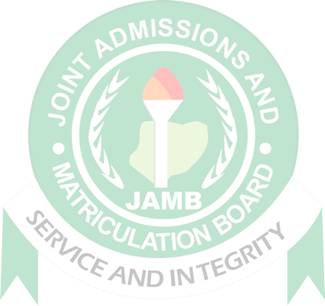
Chemistry
Paper 1 | Objectives | 45 Questions
JAMB Exam
Year: 1995
Level: SHS
Time:
Type: Question Paper
Answers provided
FREE
No description provided
Feedbacks
This paper is yet to be rated

Paper 1 | Objectives | 45 Questions
JAMB Exam
Year: 1995
Level: SHS
Time:
Type: Question Paper
Answers provided
No description provided
This paper is yet to be rated
Revision tips on test preparation for Grade A students to. Grade A students tips for any test.
Past questions are effective for revisions for all tests including WAEC, BECE, SAT, TOEFL, GCSE, IELTS
The best study methods and strategies and tips for successful exam preparation for good grades
| # | Question | Ans |
|---|---|---|
| 1. |
Chromatography is used to separate components of mixtures which differ in their rates of? A. diffusion B. migration C. reaction D. sedimentaion |
B |
| 2. |
Which of the following is a example of a chemical change? A. Dissoultion of salt in water B. Rusting of iron C. Melting of ice D. Separating a mixture by distillation |
B |
| 3. |
The number of hydrogen ions in 4.9 g of tetraoxosulphate (IV) acid is? A. 3.01 x 1022 B. 6.02 x 1022 C. 3.01 x 1023 D. 6.01 x 1023 |
B |
| 4. |
What volume of oxygen will remain after reacting 8cm3 of hydrogen with 20cm3 of oxygen? A. 10 cm3 B. 12 cm3 C. 14 cm3 D. 16 cm3 |
D |
| 5. |
A gas sample with an initial volume of 3.25 dm3 is heated and allowed to expand to 9.75 dm3 at constant pressure. What is the ratio of the final absolute temperature to the initial absolute temperature? A. 3:1 B. 5:2 C. 5:4 D. 8:3 |
A |
| 6. |
Two cylinders A and B each contains 30 cm3 of A. 3.2 g B. 6.4 g C. 80.0 g D. 160.0 g |
D |
| 7. |
A liquid begins to boil when? A. its vapour pressure is equal to the vapour pressure of its solid at the given temperature B. molecules start escaping from its surface C. its vapour pressure equals the atmosphere pressure D. its volume is sightly increased
Show Content
Detailed SolutionThe normal boiling point is the temperature at which the vapour pressure is equal to the standard sea-level atmospheric pressure. |
|
| 8. |
A particle that contains 8 proton, 9 neutrons and 7 electrons could be written as? A. O B. O+ C. O+ D. O- |
B |
| 9. |
In the oil drop experiment, Millikan determined the? A. charge to mass ratio of the electron B. mass of the electron C. charge of the electron D. mass of the proton |
C |
Preview displays only 9 out of the 45 Questions